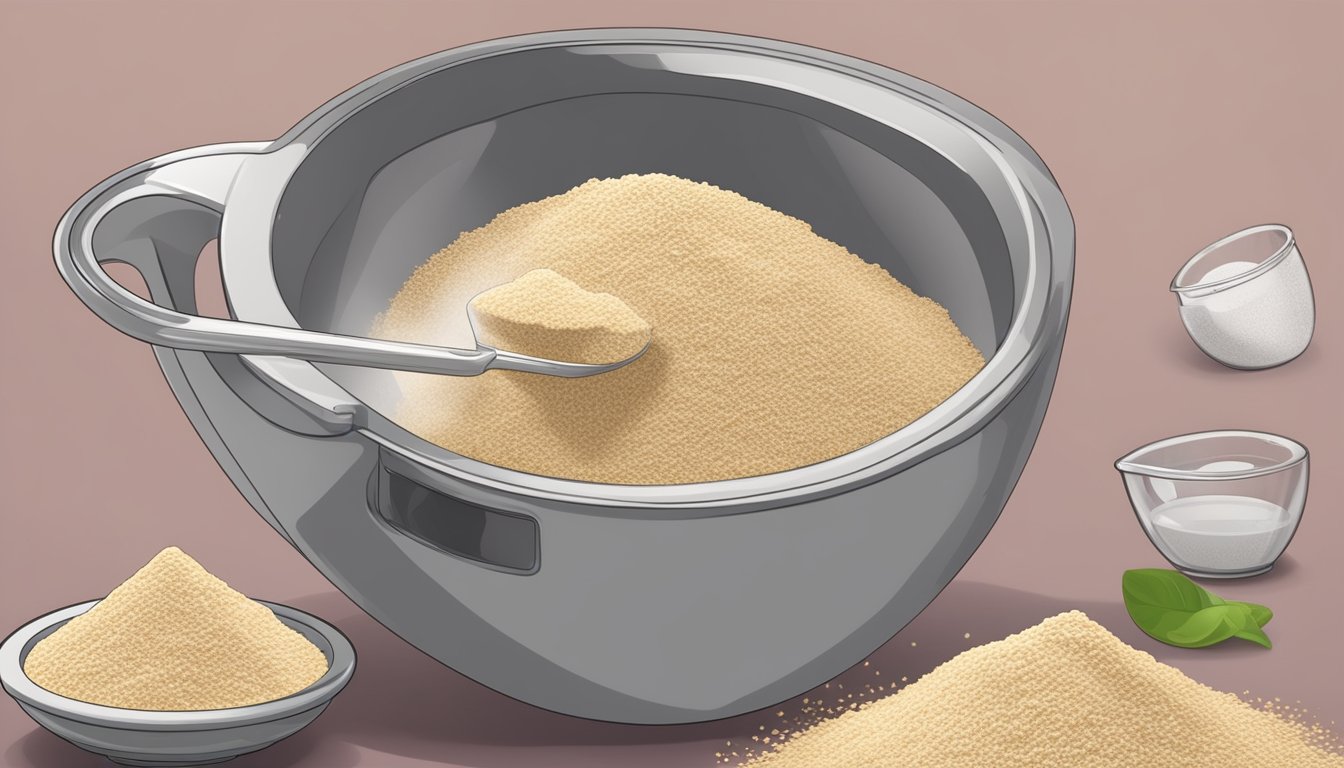Amaranth flour, a nutrient-dense alternative to traditional wheat flour, has gained popularity among health-conscious bakers and cooks. When working with this versatile ingredient, precise measurements are crucial for achieving the desired results in recipes.
One pound of amaranth flour is equivalent to approximately 67.20 tablespoons. This conversion is essential for those who prefer to measure ingredients by weight rather than volume, as it allows for more accurate and consistent proportions in baking and cooking.
Understanding the relationship between pounds and tablespoons of amaranth flour can be particularly useful when adapting recipes or scaling quantities. This knowledge empowers home cooks and professional bakers to confidently incorporate this gluten-free, protein-rich flour into their culinary creations.
Understanding Amaranth

Amaranth is a versatile pseudocereal with a rich history and impressive nutritional profile. This ancient grain offers numerous health benefits and has gained popularity as a gluten-free alternative in modern diets.
History and Background
Amaranth was a staple food of the Aztecs and Incas for thousands of years. It was cultivated in Mexico and Peru as early as 6000 BCE. The plant played a significant role in religious ceremonies and daily life.
Spanish conquistadors banned amaranth cultivation in the 16th century due to its use in indigenous rituals. This led to a decline in its production and consumption.
In recent decades, amaranth has experienced a resurgence in popularity. It is now grown in various parts of the world, including Asia, Africa, and Europe.
Nutritional Profile
Amaranth seeds are highly nutritious. They contain:
- 13-14% protein, higher than most cereals
- Essential amino acids, including lysine
- 6-7% fiber
- Calcium, iron, magnesium, and phosphorus
- Vitamin B6 and folate
Amaranth flour is rich in antioxidants, particularly gallic acid and vanillic acid. It has a balanced amino acid profile, making it a complete protein source.
The seeds contain 6-10% oil, which is high in squalene, a compound with potential health benefits.
Health Benefits
Amaranth’s nutritional composition contributes to several health benefits:
Heart health: Amaranth may help lower cholesterol levels due to its fiber and phytosterol content.
Gluten-free option: It’s safe for people with celiac disease or gluten sensitivity.
Blood sugar control: The high fiber content can help regulate blood sugar levels.
Bone health: Calcium and magnesium in amaranth support strong bones.
Digestive health: Its fiber content promotes healthy digestion and regular bowel movements.
Amaranth’s antioxidants may have anti-inflammatory properties, potentially reducing the risk of chronic diseases. Research suggests it may also have anti-cancer properties, though more studies are needed.
Amaranth Flour in Cooking

Amaranth flour offers versatility in cooking and baking, providing unique nutritional benefits and a nutty flavor. This gluten-free ingredient can enhance both sweet and savory dishes when used properly.
Culinary Uses
Amaranth flour serves as an excellent gluten-free alternative in various recipes. It works well in pancakes, cookies, and quick breads when combined with other flours. For optimal texture, substitute up to 25% of wheat flour with amaranth flour in traditional recipes.
In savory dishes, amaranth flour can thicken sauces or coat proteins before frying. Its nutty taste complements vegetables and adds depth to soups and stews. Experiment with amaranth flour in pizza crusts, flatbreads, or as a binding agent in veggie burgers.
For a unique twist, try using popped amaranth as a crunchy topping for salads or yogurt parfaits. This tiny grain expands when heated, creating a light, crispy texture.
Preparation Techniques
When baking with amaranth flour, proper measurement is crucial. Use the spoon and level method for accurate results: spoon the flour into a measuring cup and level it off with a straight edge.
To enhance its nutty flavor, toast amaranth flour in a dry skillet over medium heat for 2-3 minutes before use. Stir constantly to prevent burning and remove from heat when it becomes fragrant.
For a breakfast porridge, combine 1 part amaranth flour with 3 parts liquid. Simmer for 15-20 minutes, stirring occasionally, until it reaches a creamy consistency. Add sweeteners or fruits to taste.
Storing Amaranth
Proper storage is essential to maintain amaranth flour’s freshness and nutritional value. Keep it in an airtight container in a cool, dry place away from direct sunlight. For extended shelf life, store in the refrigerator or freezer.
Amaranth flour typically lasts 3-6 months at room temperature, up to 6 months in the refrigerator, and up to a year in the freezer. Always check for signs of spoilage, such as off odors or mold, before use.
When using refrigerated or frozen amaranth flour, allow it to come to room temperature before incorporating into recipes. This ensures even distribution and prevents clumping in batters or doughs.
Measurements and Conversions

Converting between weight and volume measurements for amaranth flour requires knowing its specific density. Different units and conversion factors are used depending on the measurement system.
Weight to Volume Conversion
Converting pounds of amaranth flour to tablespoons involves considering its density. The general formula is:
Tablespoons = (Weight in pounds × 453.592 grams/pound) ÷ (Density in g/mL × 14.7868 mL/tablespoon)
For amaranth flour, the density is approximately 0.62 g/mL. Using this value:
1 pound of amaranth flour ≈ 49 tablespoons
This conversion is useful for recipe scaling and ingredient substitutions.
Amaranth Flour Specifics
Amaranth flour has unique properties that affect its measurements:
- Density: ~0.62 g/mL
- Weight per cup: ~120 grams
- Volume per pound: ~3.78 cups
These values may vary slightly based on processing and moisture content. When measuring amaranth flour:
- Use the “spoon and level” method for accuracy
- Avoid compacting the flour in the measuring cup
- Consider using a kitchen scale for precise measurements
Measurement Units
Common units for amaranth flour include:
Weight:
- Pounds (lb)
- Ounces (oz)
- Grams (g)
Volume:
- Tablespoons (tbsp)
- Cups
- Milliliters (mL)
US Customary to Metric conversions:
- 1 pound = 453.592 grams
- 1 cup = 236.588 mL
For accurate recipe conversions, it’s best to use weight measurements. Volume measurements can be less precise due to variations in flour density and measuring techniques.
